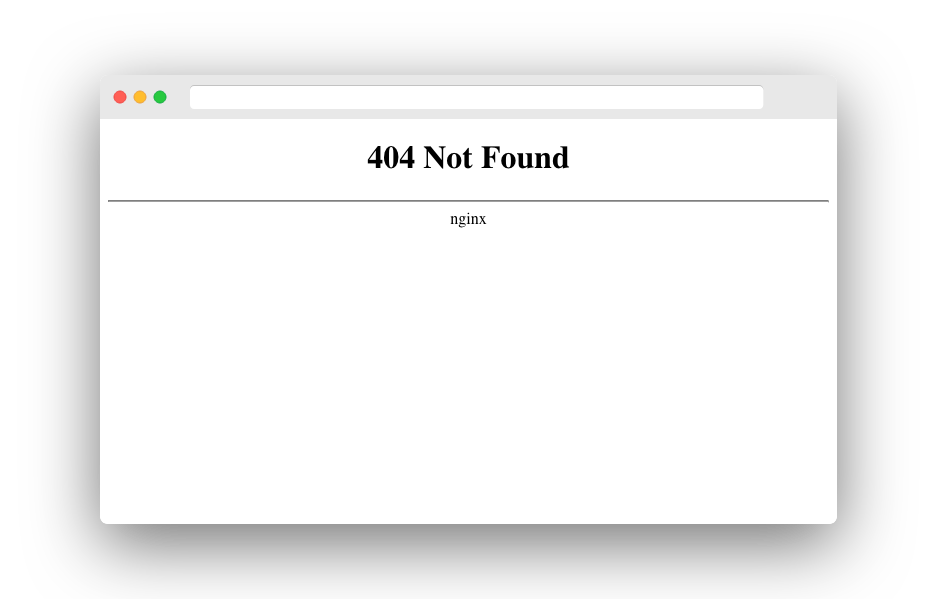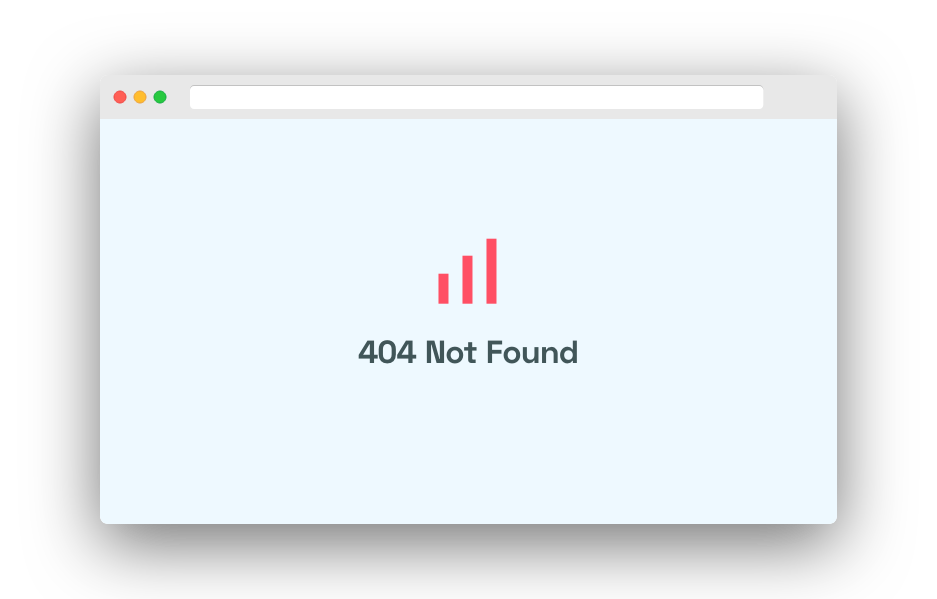One NGINX error page to rule them all
22 Dec 2018 - Help improve this postWhen I setup an NGINX server I have to setup custom error pages for every error. I want to show the error message on the page and not have a genenic “Something is wrong” error page. If customers complain about an error page it’s nice if they can communicate you the error code or message.
Before & after


NGINX error page config
First of all you need to create an error_page in your http, server, or location directive (docs), the location block should be part of the server directive:
error_page 400 401 402 403 404 405 406 407 408 409 410 411 412 413 414 415 416 417 418 421 422 423 424 425 426 428 429 431 451 500 501 502 503 504 505 506 507 508 510 511 /error.html;
location = /error.html {
ssi on;
internal;
auth_basic off;
root /var/www/default;
}
Error page template
After this you create a error.html file in /var/www/default/ (you can change this directory of course). At Simple Analytics we deploy our app to our server and for one second NGINX will return a 502 error because the app is reloading. We inform our users with a custom error message and we automatically refresh the page every 2 seconds:
<!DOCTYPE html>
<html>
<head>
<meta charset="utf-8">
<title>Your Business</title>
<meta name="viewport" content="width=device-width, initial-scale=1">
<!--# if expr="$status = 502" -->
<meta http-equiv="refresh" content="2">
<!--# endif -->
</head>
<body>
<!--# if expr="$status = 502" -->
<h1>We are updating our website </h1>
<p>This is only for a few seconds, you will be redirected.</p>
<!--# else -->
<h1><!--# echo var="status" default="" --> <!--# echo var="status_text" default="Something goes wrong" --></h1>
<!--# endif -->
</body>
</html>
NGINX error codes map
To get the variable status_text to work you will need this map in your the http directive (docs):
map $status $status_text {
400 'Bad Request';
401 'Unauthorized';
402 'Payment Required';
403 'Forbidden';
404 'Not Found';
405 'Method Not Allowed';
406 'Not Acceptable';
407 'Proxy Authentication Required';
408 'Request Timeout';
409 'Conflict';
410 'Gone';
411 'Length Required';
412 'Precondition Failed';
413 'Payload Too Large';
414 'URI Too Long';
415 'Unsupported Media Type';
416 'Range Not Satisfiable';
417 'Expectation Failed';
418 'I\'m a teapot';
421 'Misdirected Request';
422 'Unprocessable Entity';
423 'Locked';
424 'Failed Dependency';
425 'Too Early';
426 'Upgrade Required';
428 'Precondition Required';
429 'Too Many Requests';
431 'Request Header Fields Too Large';
451 'Unavailable For Legal Reasons';
500 'Internal Server Error';
501 'Not Implemented';
502 'Bad Gateway';
503 'Service Unavailable';
504 'Gateway Timeout';
505 'HTTP Version Not Supported';
506 'Variant Also Negotiates';
507 'Insufficient Storage';
508 'Loop Detected';
510 'Not Extended';
511 'Network Authentication Required';
default 'Something is wrong';
}
Reload your NGINX config (no need to restart NGINX):
sudo nginx -t && sudo nginx -s reload
Test your config
Add this to your server directive:
location = /404.html {
return 404;
}
And reload your NGINX again:
sudo nginx -t && sudo service nginx reload
Useful links
- nginx.org/en/docs/http/ngx_http_ssi_module.html
- nginx.com/resources/wiki/start/topics/examples/dynamic_ssi/
- cambus.net/nginx-and-server-side-includes/
Happy coding! – Found a mistake or a typo? Please submit a PR to my GitHub-repo.